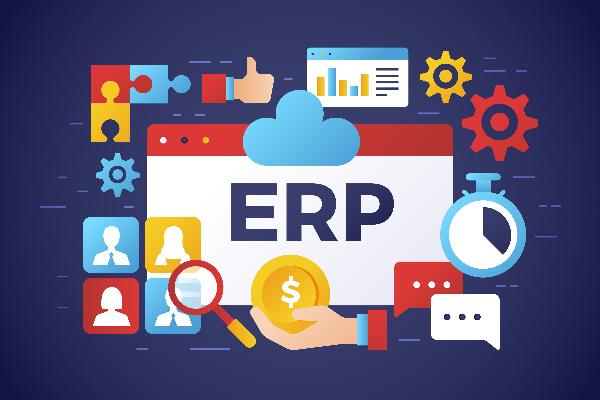Deployment Strategies for Odoo Applications

Strong 8k brings an ultra-HD IPTV experience to your living room and your pocket.
Odoo, the open-source ERP powerhouse, has become a game-changer for businesses seeking a customizable and scalable solution. Its modular design allows for tailored functionalities, catering to diverse industry needs. But after the development phase, a crucial step remains: deploying your custom Odoo application to a production environment. This can feel like a high-stakes transition, but fear not! Here, we'll delve into various deployment strategies for Odoo applications, equipping you with the knowledge to navigate this process with confidence. Whether you choose to leverage in-house expertise or partner with a reputable Odoo development company, understanding these strategies will empower you to make informed decisions and ensure a smooth deployment.
Choosing Your Deployment Path: Understanding the Landscape
The first step is understanding the different deployment environments available. Each has its own advantages and considerations:
On-Premise Deployment: This traditional approach involves installing and running Odoo on your own servers. It offers complete control over the infrastructure but requires significant IT expertise for maintenance and security.
Cloud Deployment: Leveraging cloud platforms like AWS, Google Cloud Platform, or DigitalOcean offers scalability, flexibility, and reduced hardware burden. However, cloud costs can accumulate over time and may require additional configuration for optimal performance.
Hybrid Deployment: This approach combines on-premise and cloud environments. You might choose to host the core Odoo application on-premise for tighter control and sensitive data, while utilizing the cloud for additional services like backups or development environments.
The best deployment strategy depends on your specific needs. Consider factors like budget, IT resources, security requirements, and desired level of control. Consulting with an experienced Odoo development company can be invaluable in making this crucial decision.
Deployment Strategies: Tailoring the Approach to Your Needs
Once you've chosen your deployment environment, it's time to define the deployment strategy itself. Here are some popular options:
Recreate Deployment (Simple and Direct): This basic approach involves shutting down the existing Odoo instance (if applicable) and installing the new version on the production server. It's suitable for small deployments with minimal downtime tolerance. However, it carries a higher risk of introducing errors during the installation process.
Rolling Deployment (Phased Approach): Here, the new version is gradually rolled out to a subset of users or servers. This allows for testing and monitoring before deploying the update to the entire production environment. While it minimizes downtime, it can be more complex to set up and manage.
Blue/Green Deployment (Seamless Transition): This strategy involves running two identical production environments – "Blue" and "Green." New updates are deployed on the "Green" environment first, where they are thoroughly tested. Once verified, traffic is switched to the "Green" environment, effectively making it the new production instance. This approach offers minimal downtime and increased confidence in the deployment, but requires more resources to maintain the duplicate environment.
Canary Deployment (Early Warning System): This involves deploying the new version to a small subset of users or servers while still directing most traffic to the existing version. This allows for early detection of any issues with the new version before a wider rollout. It's a valuable strategy for high-traffic applications where catching bugs early is crucial.
The Deployment Process: A Step-by-Step Guide
Regardless of the chosen strategy, a well-defined deployment process is essential. Here's a general roadmap you can adapt:
Preparation is Key:
Code Review: Conduct a final code review before deployment to identify and address potential issues.
Version Control: Ensure all code changes are properly version-controlled using a tool like Git. This enables rollbacks if necessary.
Testing: Perform comprehensive testing, including unit testing, integration testing, and user acceptance testing (UAT) with real users.
Environment Setup: Configure the Production Server: Ensure hardware and software requirements are met on the production server. Install necessary dependencies like Python and the PostgreSQL database server.
Security First: Implement robust security measures like firewalls, strong passwords, and user access controls.
Deployment Execution:
Transfer Code Securely: Use secure methods like SCP or Git to transfer the application code to the production server.
Database Management: Migrate data from the development database to the production database. Implement a backup strategy to ensure data recovery in case of unforeseen events.
Configuration and Customization: Configure system settings and deploy custom modules, ensuring seamless integration with the core Odoo application.
Post-Deployment Steps:
Monitoring and Alerts: Set up performance monitoring tools to track key metrics like response times, resource usage, and error logs. Proactive monitoring helps identify and address issues promptly.
Continuous Integration and Delivery (CI/CD): Consider implementing a CI/CD pipeline to automate the deployment process. This allows for faster updates, reduced errors, and a more streamlined workflow for future deployments.
Leveraging Odoo Development Services for a Flawless Deployment
While the knowledge of deployment strategies empowers you for a successful transition, partnering with a reputable Odoo development company can offer several advantages:
Expertise and Experience: Odoo development teams possess in-depth knowledge of the platform, its functionalities, and best practices for deployment. They can navigate potential challenges and ensure a smooth rollout.
Automated Solutions: Many Odoo development companies utilize automated tools and scripts to streamline deployments. This reduces the risk of human error and ensures consistency across deployments.
Ongoing Support: A reliable Odoo development partner offers ongoing support after deployment. This includes resolving technical issues, assisting with customizations, and providing guidance on future upgrades.
By leveraging the expertise of an Odoo development company and following the outlined deployment strategies, you can ensure a successful transition of your custom Odoo application to the production environment.
Conclusion: A Streamlined Path to Odoo Success
Deploying an Odoo application from development to production can seem daunting. However, with careful planning, a well-defined process, and the knowledge of various deployment strategies, you can navigate this crucial step with confidence. Remember, collaborating with an experienced Odoo development company can significantly enhance your deployment journey. This allows you to focus on your core business while ensuring a smooth and successful transition for your custom Odoo solution.
Ready to embark on your Odoo deployment journey? Leverage the power of Odoo development services and transform your business with a streamlined and efficient ERP solution.
Note: IndiBlogHub features both user-submitted and editorial content. We do not verify third-party contributions. Read our Disclaimer and Privacy Policyfor details.


